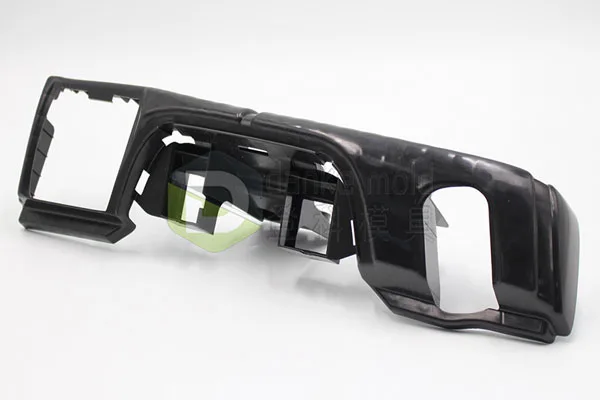2-shot or dual-material injection molding, also known as 2K injection molding, is a novel manufacturing method that uses two materials in one molding cycle to make products with unique features. This method is common across sectors because it produces functional, attractive, and affordable components. 2K injection molding has advantages over regular injection molding for automotive, medical, and consumer electronics. This article discusses 2K injection molding’s method, uses, benefits, and future.
Definition of 2K Injection Molding
2K injection molding creates multi-material parts by injecting two components into a mold in phases. Two materials of various types, hardnesses, and colors are injected into the mold cavity at separate times. These materials should be combined into a functioning item without assembly or post-processing.
Injecting and partly cooling hard plastic into the mold is the initial step. A softer, more flexible plastic or elastomer is injected when the mold is turned or relocated. After cooling, the second material joins to the first, creating a coherent portion.
Key Benefits of 2K Injection Molding
Due of its many benefits over single-material molding, 2K injection molding is becoming more popular. Key advantages include:
1. Improved Function
By utilizing two materials, producers may create components with the best of both worlds. A component may have a hard exterior layer for protection and a soft, flexible inner layer for comfort or shock absorption. Complex components requiring different material qualities benefit from this adaptability.
2. Streamlined Production
In conventional multi-material components manufacture, each material is processed separately, then assembled. 2K injection molding combines both materials in one phase, eliminating stages. This speeds manufacturing, cuts labor costs, and boosts efficiency.
3. Durability improved
Durable 2K injection molding parts may be created. A component may have a strong outer shell and a flexible or wear-resistant inner layer. This allows for lightweight, durable components for tough situations.

2K plastic products
Two-K Injection Molding
Using 2K injection molding needs specific equipment and tools. It involves these steps:
1. Mold Design: Mold design is crucial. A 2K mold may include rotating cores or numerous cavities to inject two materials at separate phases. The mold must be built for material bonding and component release.
2. First Material Injection: Injection of the initial material produces the part’s fundamental structure. If the item requires ABS or polycarbonate, this material might be stiff. The mold is chilled to partially harden the first substance so the second may adhere to it.
3. Second Material Injection: The mold may spin or open to inject the second material once the first material cools. The second substance, TPE or silicone, is more flexible. This substance binds with the first while cooling, creating a seamless, multi-material component.
Challenges of 2K Injection Molding
While 2K injection molding has numerous advantages, it also has drawbacks. Key considerations include:
- Complex Tooling: 2K injection molds are more complicated and costly than single-material molds. These molds need accuracy and skill to design and make.
- Materials Compatible: For good bonding, 2K injection molding materials must be compatible. Incompatibility may cause weak relationships, poor performance, or flaws.
- Cycle Time: Multiple injection cycles and cooling stages may lengthen the process compared to single-material injection molding. High-volume manufacturing may take longer and cost more.
Conclusion
2K injection molding is a novel method for making multi-material objects with unique features. Functionality, manufacturing efficiency, cost savings, and aesthetic customization are its benefits. As industries require more sophisticated and high-performance goods, 2K injection molding will become more significant. Its advantages make it important for contemporary production despite its drawbacks.
